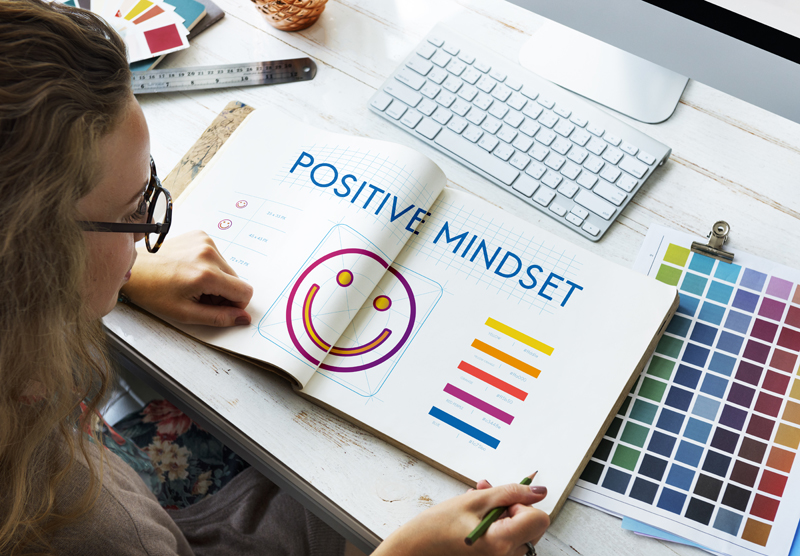
By Rita Waterman on Sep 20, 2021

Modern day branding is about more than selling the features and benefits of your product or service. Any good quality web design agency will tell you that as important as those two elements of marketing are, they don’t come into play until you have stirred interest in your brand. And a color choice that fits your brand can increase brand awareness by up to 80%.
Use of color is a way of advertisers attracting the eye and grabbing the attention. And when you consider that the average person is exposed to anything between 4000 – 10,000 ads per day, it’s clear that catching the eye of browsers is crucial for any digital marketing strategy.
But use of color is about more than just grabbing attention. The colors you use in an advertising strategy can be used to stir emotion in people and get them prepped for your message. The emotions you aim to tug at might be positive or negative depending on your industry, target audience and message.
And it’s worth considering who your target audience is when choosing your color palette. For example, blue is preferred by 35% of women but 57% of men.
But an ad that fails to capture the imagination is likely to fall by the wayside in favor of more enticing ads that get under people’s skin and demand their attention.
Color psychology is used to manipulate the emotions of users and guide them through a train of thought. Have you ever noticed how vacation ads come out in the depth of winter? Dark, cold nights and gray days can be brightened up by the bright yellows and blues that we associate with days at the beach. We feel the connection. There is a spark of joy, a memory of a past vacation flashes through our minds, and excitement is stirred.
Likewise, many ads for charities will use dour, toned down colors to describe the issue they are trying to tackle, followed by bright hues when showing how donations have changed a life. The ad takes you on an emotional journey.
These examples are more akin to TV ads, but they demonstrate the emotional pull of color in advertising.
Choosing the right color palette for your website or ad campaign is crucial. It requires you to understand your target audience and its mindset. If you are not sure, speak to a website design agency. Explain your product or service, target market and brand personality, and they will be able to help you select the appropriate colors. Sometimes, simply changing the color of your CTA button can make a world of difference.
When it comes to the color palette for your brand, first impressions count. Color makes accounts for 62% to 90% of people’s first impressions. Studies have shown the average consumer makes their mind up on the visual appeal of your brand before you can say “rainbow.”
One of the interesting things about color psychology is that when you hear how each color is perceived, it will probably make sense to you.
Does equating yellow with happiness make sense? Of course, it does. Soft yellow is gentle and comforting. Bright yellow is vibrant and fun. It evokes excitement, warmth and positivity.
But a word of warning: bright yellow alongside black will make your site remind people of wasps, bees and, well, danger.
Banks and news outlets love blue (often with gold or yellow), because it suggests power and trust. Blue is reliable, secure, and orderly – everything you want from an institution that is looking after your money or informing you about world events.
Blue rarely looks out of place and can be paired with a variety of other colors to add a touch of calm to your website and temper a brighter color to instil confidence in your brand.
The earth may be predominantly covered in water and overlooked by sky, but in the minds of consumers, green is the color of nature.
If your brand image is associated with life outdoors, organic produce or saving the planet, green will resonate with your target audience. These are issues that people take seriously, so add bright yellow or orange if you want to suggest playfulness.
Because of its association with the natural world, green is also seen as serene and balanced, so adding green to another color can lend a calming influence.
Once something of a pariah, orange is now quite a popular color in website design. It oozes positivity and gives energy that can be the trigger for a purchase in direct response marketing. Orange brings to mind comfort and warmth but is less harsh than bright red which can sometimes be dominating and aggressive.
Black is elegant and sophisticated. It is a powerful color that is often used to allow tiny splashes of brighter hues to work their psychological magic in an understated yet enhanced way or to add authority to brighter colors and complement them.
Black can often be viewed negatively, but in color psychology, it represents prestige and authority. It’s a frequent choice for luxury retailers.
In the past, websites were often full of imagery and color schemes, and white space was frowned upon. These days, white space is used to create a modern, minimalistic website that acts as a metaphor for a sleek, professional, paperless office.
White is neutral and helps to break up other colors and let them perform. It is often used to good effect in creating a space for a CTA button to really stand out. If you don’t like the idea of white, off-whites like ivory can have the same effect.
Your call to action (CTA) is ultimately the reason why you want clients on your landing page or website. A clear CTA is vital to guide users to what you want them to do next. While the color scheme on your site should be consistent with your branding and your digital marketing strategy, the CTA is arguably the most important button on your landing page. The CTA must stand out and attract the user’s eye. After all, color influences around 85% of purchasing decisions.
This means it needs to both complement your overall use of color and contrast with the main color scheme. Getting this decision right can make or break your landing page, so if you have any uncertainties, it’s best to consult a web development company. Often they will suggest that you try a number of different color schemes to see which returns the best results.
Every aspect of website design and your digital marketing strategy is important. There is a lot to consider when developing your strategy, but it is worth the investment of time and money to get every aspect bang on. Remember that your decision is not set in stone but that rebranding too often cam confuse your audience
When choosing the best colors for your brand, the most important consideration is the emotions you want to stir in your visitors and what actions you want them to take. Be open to advice from a web design agency on this, but remember it is your call to make. If you’re not sure how to combine certain colors, talk to the professionals to help you decide.
When you get it right, color is a powerful and effective aspect of your marketing mix. Get it wrong, and your digital presence becomes white noise. To talk about enhancing your online branding through emotive colors that drive consumers to action get in touch with Umbrella Local today.
Use our free tool to get your score calculated in under 60 seconds.